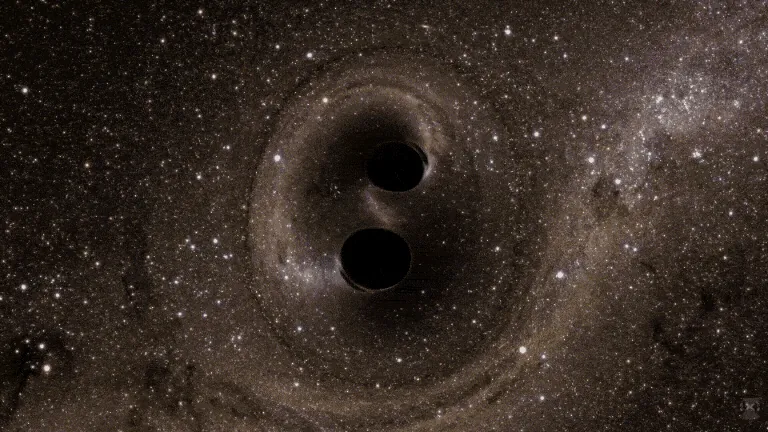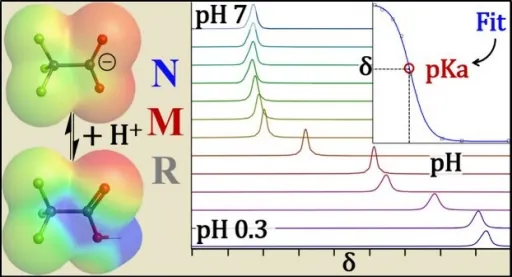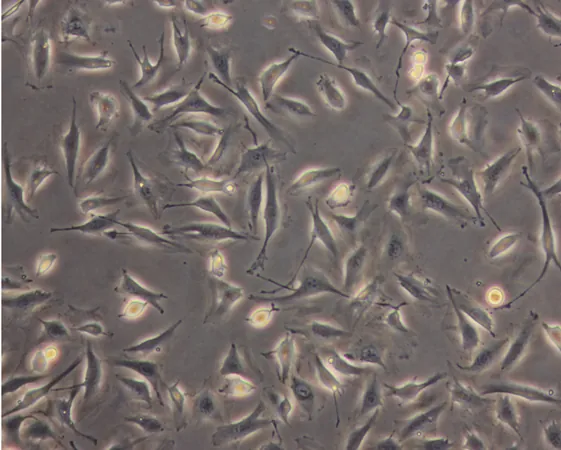
A Decade of Discovery: How Gravitational Waves Changed Our View of the Universe
2025-09-14
Author: Benjamin
A Historic Milestone in Science
On September 14, 2015, the world of physics shifted dramatically as scientists detected gravitational waves for the very first time. This breakthrough, a century in the making, affirmed Albert Einstein's groundbreaking theory of general relativity.
The Seeds of a Revolutionary Discovery
Einstein proposed that massive objects distort the fabric of space-time, creating ripples known as gravitational waves—phenomena he believed were beyond our detection capabilities, as their effects were minuscule, smaller than an atom.
The Visionaries Behind the Quest
The ambitious pursuit of capturing these elusive waves started in the 1970s with MIT physicist Rainer Weiss, who envisioned using an interferometer to detect these minute fluctuations. Weiss, along with Caltech's Kip Thorne, advocated for long detector paths and multiple locations to distinguish true cosmic signals from local noise.
Building the Future of Cosmic Observation
By 1990, their dreams took shape as the Laser Interferometer Gravitational-Wave Observatory (LIGO) was born, featuring two L-shaped detectors—located in Hanford, Washington, and Livingston, Louisiana—with arms stretching an impressive 2.5 miles (4 kilometers). Despite years of silence, these detectors were refined and upgraded to increase their sensitivity to even the faintest signals from the depths of the universe.
The Groundbreaking Moment
When LIGO's upgraded instruments were switched on in September 2015, expectations ran high. Overnight, the team observed a stunning display: a perfect waveform directly correlating with Einstein's predictions. "I looked at the screen and, lo and behold, there was this incredible picture of the waveform," Weiss recalled, encapsulating the thrill of the moment.
Unveiling Cosmic Events
What they had captured was the unmistakable sound of two massive black holes colliding—a cataclysmic event that occurred 1.3 billion years ago. This revelation opened a new chapter in astrophysics, allowing the scientific community to study phenomena like black hole mergers and neutron star collisions in unprecedented detail.
A New Era in Cosmic Exploration
In the years following this landmark detection, LIGO and its partners have identified around 300 similar events, illuminating the chaotic ballet of the cosmos. Notably, a discovery in June 2023 revealed a subtle "gravitational wave background" resulting from pairs of black holes spiraling toward one another across vast stretches of time.
Looking Ahead: Linking Theories
With further advancements, LIGO scientists are poised to validate Einstein's theories and potentially merge quantum mechanics with relativity, paving the way for untold discoveries in the universe. As we celebrate a decade since the detection of gravitational waves, the journey has only just begun!









 Brasil (PT)
Brasil (PT)
 Canada (EN)
Canada (EN)
 Chile (ES)
Chile (ES)
 Česko (CS)
Česko (CS)
 대한민국 (KO)
대한민국 (KO)
 España (ES)
España (ES)
 France (FR)
France (FR)
 Hong Kong (EN)
Hong Kong (EN)
 Italia (IT)
Italia (IT)
 日本 (JA)
日本 (JA)
 Magyarország (HU)
Magyarország (HU)
 Norge (NO)
Norge (NO)
 Polska (PL)
Polska (PL)
 Schweiz (DE)
Schweiz (DE)
 Singapore (EN)
Singapore (EN)
 Sverige (SV)
Sverige (SV)
 Suomi (FI)
Suomi (FI)
 Türkiye (TR)
Türkiye (TR)
 الإمارات العربية المتحدة (AR)
الإمارات العربية المتحدة (AR)